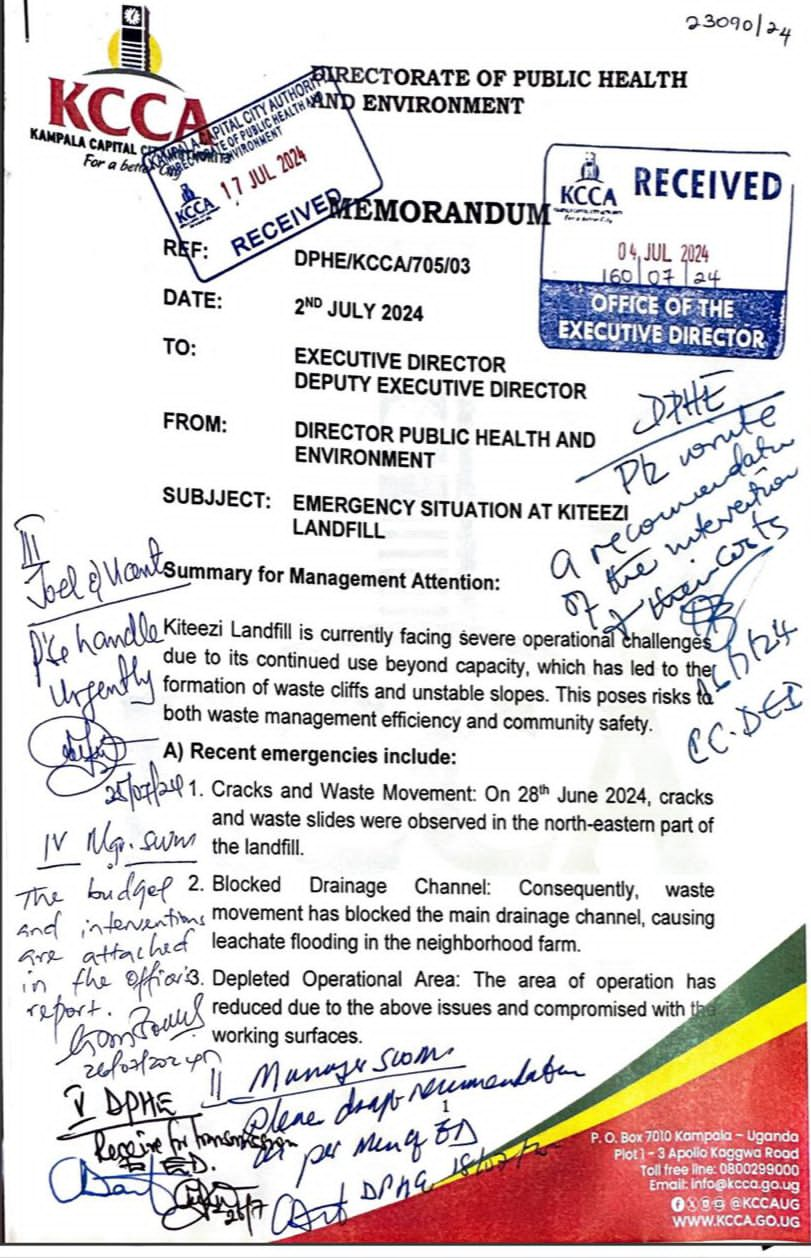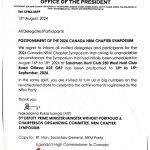How KCCA’s Neglect Is Poisoning Kampala
While the Kitezi Landfill remains a critical component of waste management for Kampala and Wakiso, it is clear that immediate and significant improvements are necessary. The current state of the landfill poses substantial risks to the environment and public health, and the mismanagement of resources exacerbates these challenges. The KCCA must take swift and decisive action to address these issues, ensuring the safety and well-being of the communities it serves.
Kampala Capital City Authority’s (KCCA) Kitezi Landfill, a crucial facility for waste disposal in Kampala and the neighboring Wakiso district, is facing severe operational challenges that demand immediate attention. The landfill, operational since 1996, is located on a 36 hectare site and receives approximately 1,200 tons of waste daily. However, the site’s management and infrastructure have significantly deteriorated, leading to a myriad of environmental and public health risks.
The Kitezi Landfill is now struggling with critical issues due to its prolonged use beyond capacity. This has resulted in the formation of waste cliffs and unstable slopes, creating hazardous conditions that threaten both the efficiency of waste management and the safety of the surrounding community.
On June 28, 2024, cracks and waste slides were observed in the northeastern part of the landfill. This was followed by a blockage in the main drainage channel, caused by the movement of waste, which has led to leachate flooding in a neighboring farm. The landfill’s operational area has also diminished due to these challenges, compromising the functionality of the working surfaces.
A report by the Public Health Standing Committee, following a supervision and monitoring visit in November 2023, highlighted several alarming conditions at the site. The committee, chaired by Ssemuli Daniel, noted that the landfill lacks proper infrastructure for recycling and composting, with roads within the site being poorly managed, particularly during the rainy season, hindering the smooth movement of vehicles.
Moreover, the landfill’s air quality is a significant concern. Odor management systems are either inadequate or nonexistent, allowing unpleasant odors to spread, particularly in nearby residential areas. The landfill has also failed to implement proper measures to prevent leachate contamination, which poses a severe risk to groundwater quality.
The safety of workers and waste pickers at the landfill is another pressing issue. Many workers lack essential safety equipment, such as gloves, masks, and protective clothing, which exposes them to numerous health hazards. Additionally, there are no regular training programs to ensure adherence to safety protocols. The presence of unauthorized individuals engaging in waste-picking activities during the operation of heavy machinery further exacerbates the risks.
Budget utilization at the landfill is also under scrutiny. The committee observed that the quality of murram (soil) used at the site is substandard, and the Bulldozer D6, responsible for spreading and compacting the murram, is often faulty, leading to significant financial losses. The absence of a water bowser machine, budgeted for at a daily rate of UGX 1,220,000, raises further concerns about the effectiveness of dust control measures.
The committee also discovered that the landfill’s KCCA offices are built on land not owned by the institution, with ongoing disputes over access roads, complicating the situation further.
A particularly troubling finding is that the landfill’s leachate treatment plant has not been operational for the past 10 years. This failure has resulted in the accumulation of leachate, forming stagnant ponds around the landfill, which has forced nearby residents to vacate their homes due to the unbearable stench and unsanitary conditions. These ponds pose significant environmental hazards and public health risks, potentially contaminating groundwater and contributing to poor air quality.
Given these findings, the committee has made several recommendations to address the issues at Kitezi Landfill. These include visiting contractors to verify the quality and quantity of murram supplied, halting the collection of murram from KCCA’s procured land, and revisiting contracts with contractors involved in landfill operations. The committee also emphasized the need for strict access control to prevent unauthorized waste-picking activities, public awareness campaigns to educate the community about the risks associated with these activities, and the procurement of a weighing scale machine to improve waste tracking and management.
Additionally, the committee recommends enhancing odor management systems, conducting regular inspections and maintenance of waste disposal equipment, addressing issues related to murram utilization, and acquiring a water bowser machine to improve dust control and compaction. Finally, they suggest establishing a solid waste recycling plant at Kitezi to improve waste management practices.





















